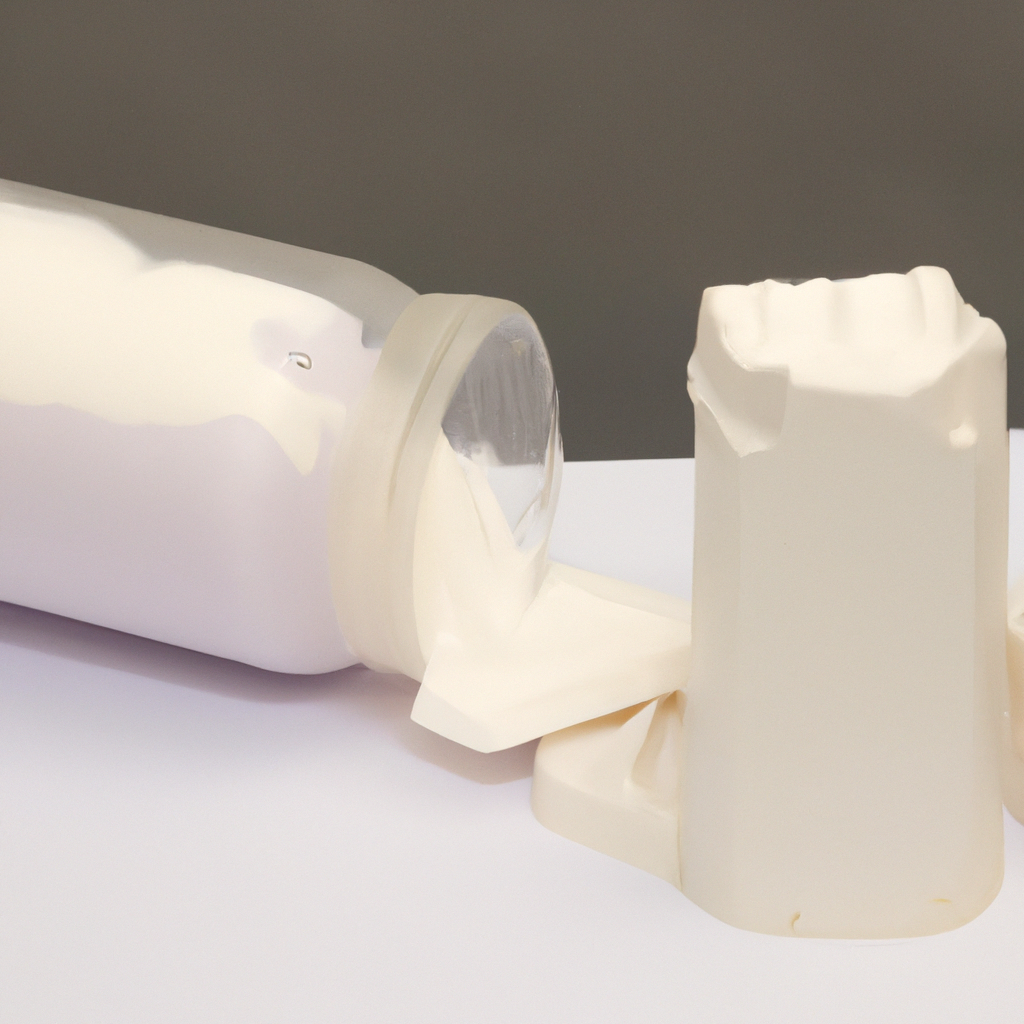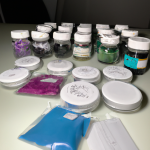-
Table of Contents
“Smooth-On vs Alumilite Resins: The Ultimate Showdown for Crafting Excellence!”
When it comes to casting resins, Smooth-On and Alumilite are two of the most prominent brands in the market, each offering a range of products tailored for various applications, from art and crafts to industrial uses. This review delves into the key features, advantages, and potential drawbacks of both Smooth-On and Alumilite resins, providing a comprehensive comparison to help users make informed decisions based on their specific project needs. By examining factors such as ease of use, curing times, finish quality, and versatility, this review aims to highlight the strengths and weaknesses of each brand, ultimately guiding users in selecting the right resin for their creative endeavors.
Smooth-On Resins: Pros and Cons
Smooth-On resins are widely recognized in the crafting and manufacturing industries for their versatility and reliability. These resins are particularly favored for applications such as casting, molding, and prototyping. However, like any material, they come with their own set of advantages and disadvantages that potential users should consider before making a decision.
One of the primary benefits of Smooth-On resins is their extensive range of products, which cater to various needs and applications. For instance, the company offers different formulations, including polyurethane, epoxy, and silicone resins, each designed for specific uses. This variety allows users to select a resin that best fits their project requirements, whether they are creating intricate molds or durable castings. Furthermore, Smooth-On resins are known for their excellent clarity and finish, making them ideal for artistic applications where aesthetics are paramount.
In addition to their versatility, Smooth-On resins are relatively easy to work with. Many formulations have user-friendly mixing ratios and curing times, which can be particularly advantageous for beginners or those who may not have extensive experience with resin casting. The clear instructions provided by Smooth-On further enhance the user experience, ensuring that even those new to the medium can achieve satisfactory results. Moreover, the resins often cure to a strong, durable finish, which is essential for both functional and decorative applications.
However, despite these advantages, there are some drawbacks to consider. One notable concern is the potential for toxicity during the mixing and curing process. Many Smooth-On resins contain chemicals that can be harmful if inhaled or if they come into contact with skin. Therefore, it is crucial for users to take appropriate safety precautions, such as wearing gloves and working in a well-ventilated area. This requirement for safety measures can be a deterrent for some, particularly hobbyists who may not be accustomed to handling such materials.
Another consideration is the cost associated with Smooth-On resins. While they offer high-quality products, the price point can be higher than some alternative brands. This factor may lead budget-conscious users to explore other options, especially if they are working on large-scale projects that require significant quantities of resin. Additionally, while Smooth-On resins are known for their clarity and finish, achieving the desired results may require additional steps, such as sanding or polishing, which can add time and complexity to the project.
Furthermore, the curing time for some Smooth-On resins can vary significantly depending on the specific formulation and environmental conditions. While some users may appreciate the flexibility of working with slower-curing resins, others may find the wait frustrating, particularly in fast-paced production environments. This variability can impact project timelines and should be factored into planning.
In conclusion, Smooth-On resins offer a range of benefits that make them a popular choice among artists, crafters, and manufacturers. Their versatility, ease of use, and high-quality finish are compelling reasons to consider them for various applications. However, potential users must also weigh the safety concerns, cost implications, and curing times associated with these products. By carefully evaluating these pros and cons, individuals can make informed decisions that align with their specific project needs and safety requirements.
Alumilite Resins: Key Features and Benefits
Alumilite resins have gained significant attention in the realm of casting and molding materials, particularly among hobbyists and professionals alike. One of the most notable features of Alumilite resins is their versatility, which allows them to be used in a wide array of applications, from crafting intricate jewelry to creating robust industrial parts. This adaptability is largely due to the various formulations available, including clear, colored, and flexible options, catering to the specific needs of different projects. As a result, users can select the resin that best aligns with their desired outcome, whether it be for aesthetic appeal or functional performance.
In addition to their versatility, Alumilite resins are known for their ease of use. The mixing ratios are straightforward, typically requiring a simple one-to-one ratio of resin to hardener. This simplicity not only reduces the likelihood of user error but also streamlines the preparation process, allowing for quicker project turnaround times. Furthermore, the resins cure at room temperature, eliminating the need for specialized equipment or heating elements, which can be a barrier for some users. This accessibility makes Alumilite an attractive option for both beginners and seasoned professionals.
Another key benefit of Alumilite resins is their impressive mechanical properties once cured. These resins exhibit high tensile strength and durability, making them suitable for applications that demand resilience and longevity. For instance, when used in the production of prototypes or functional parts, Alumilite resins can withstand significant stress and strain, ensuring that the final product meets the necessary performance standards. Additionally, the clarity of certain formulations allows for the creation of visually striking pieces, as they can be easily tinted or embedded with various materials, such as glitter or pigments, enhancing their aesthetic appeal.
Moreover, Alumilite resins are known for their low viscosity, which facilitates the pouring process and minimizes the risk of air bubbles forming during casting. This characteristic is particularly advantageous when working with intricate molds or detailed designs, as it ensures that the resin fills every crevice and contour, resulting in a smooth and flawless finish. The ability to achieve such high-quality results consistently is a significant advantage for artists and manufacturers who prioritize precision in their work.
In terms of curing time, Alumilite resins offer a range of options, allowing users to select a formulation that aligns with their project timelines. Some resins cure within minutes, while others may take several hours, providing flexibility depending on the complexity of the task at hand. This adaptability is particularly beneficial for those who may need to complete multiple projects in a short period or require a quick turnaround for client work.
Lastly, the support and resources available for Alumilite users further enhance the overall experience. The company provides extensive documentation, tutorials, and community forums, which can be invaluable for troubleshooting and sharing techniques. This sense of community fosters a collaborative environment where users can learn from one another, ultimately improving their skills and expanding their creative horizons.
In conclusion, Alumilite resins stand out in the market due to their versatility, ease of use, impressive mechanical properties, low viscosity, and supportive community. These features make them an excellent choice for a wide range of applications, ensuring that users can achieve high-quality results with confidence. Whether one is a novice exploring the world of resin casting or a seasoned professional seeking reliable materials for complex projects, Alumilite resins offer a compelling solution that meets diverse needs and expectations.
Comparing Smooth-On and Alumilite: Which Resin is Right for You?
When it comes to selecting the right resin for your project, the choice between Smooth-On and Alumilite can significantly impact the outcome of your work. Both brands are well-respected in the industry, offering a range of products that cater to various applications, from casting and molding to prototyping and artistic endeavors. To make an informed decision, it is essential to compare their characteristics, performance, and suitability for specific tasks.
Smooth-On is renowned for its extensive selection of urethane and silicone rubbers, as well as epoxy resins. One of the standout features of Smooth-On products is their versatility. For instance, their urethane resins are known for their excellent detail reproduction and durability, making them ideal for creating intricate molds and castings. Additionally, Smooth-On offers a variety of formulations that cater to different needs, such as fast-setting options for quick projects or flexible resins for applications requiring elasticity. This adaptability makes Smooth-On a popular choice among artists, hobbyists, and professionals alike.
On the other hand, Alumilite is equally impressive, particularly in the realm of casting resins. Alumilite’s products are often praised for their ease of use and quick curing times, which can be a significant advantage for those working on time-sensitive projects. The brand’s clear casting resin, for example, is favored for its clarity and ability to capture fine details, making it suitable for jewelry making and other applications where aesthetics are paramount. Furthermore, Alumilite offers a range of colors and additives that allow users to customize their projects, enhancing creativity and personalization.
When comparing the two brands, it is crucial to consider the specific requirements of your project. For instance, if you are working on a project that demands high flexibility and durability, Smooth-On’s flexible urethane resins may be the better option. Conversely, if you prioritize speed and ease of use, Alumilite’s quick-setting resins could be more advantageous. Additionally, the choice may also depend on the desired finish; Smooth-On’s products often provide a more professional-grade finish, while Alumilite’s offerings are excellent for achieving vibrant colors and effects.
Moreover, the user experience can vary significantly between the two brands. Smooth-On products may require more precise measuring and mixing, which can be a consideration for beginners or those who prefer a more straightforward approach. In contrast, Alumilite’s user-friendly instructions and forgiving mixing ratios can make it more accessible for novice users. This ease of use can lead to quicker learning curves and more successful outcomes for those new to resin casting.
Ultimately, the decision between Smooth-On and Alumilite will depend on your specific needs, preferences, and the nature of your project. Both brands offer high-quality products that can yield impressive results, but understanding their unique characteristics will help you make the best choice. Whether you prioritize versatility, speed, or finish quality, evaluating the strengths of each brand in relation to your project will guide you toward the right resin for your creative endeavors. As you embark on your next project, consider these factors carefully to ensure that your choice aligns with your artistic vision and practical requirements.
Q&A
1. **Question:** What are the main differences in curing times between Smooth-On and Alumilite resins?
**Answer:** Smooth-On resins typically have longer curing times, allowing for more working time, while Alumilite resins cure faster, which can be beneficial for quick projects.
2. **Question:** How do the mechanical properties of Smooth-On and Alumilite resins compare?
**Answer:** Alumilite resins generally offer higher tensile strength and impact resistance compared to Smooth-On resins, making them more suitable for durable applications.
3. **Question:** Which brand is more versatile for different applications, Smooth-On or Alumilite?
**Answer:** Smooth-On is often considered more versatile due to its wide range of products tailored for various applications, including casting, molding, and special effects, while Alumilite is primarily focused on casting and prototyping.In conclusion, both Smooth-On and Alumilite resins offer unique advantages depending on the specific needs of the user. Smooth-On resins are known for their versatility and range of products suitable for various applications, while Alumilite resins are praised for their ease of use and quick curing times. Ultimately, the choice between the two will depend on factors such as project requirements, desired properties, and personal preferences.


